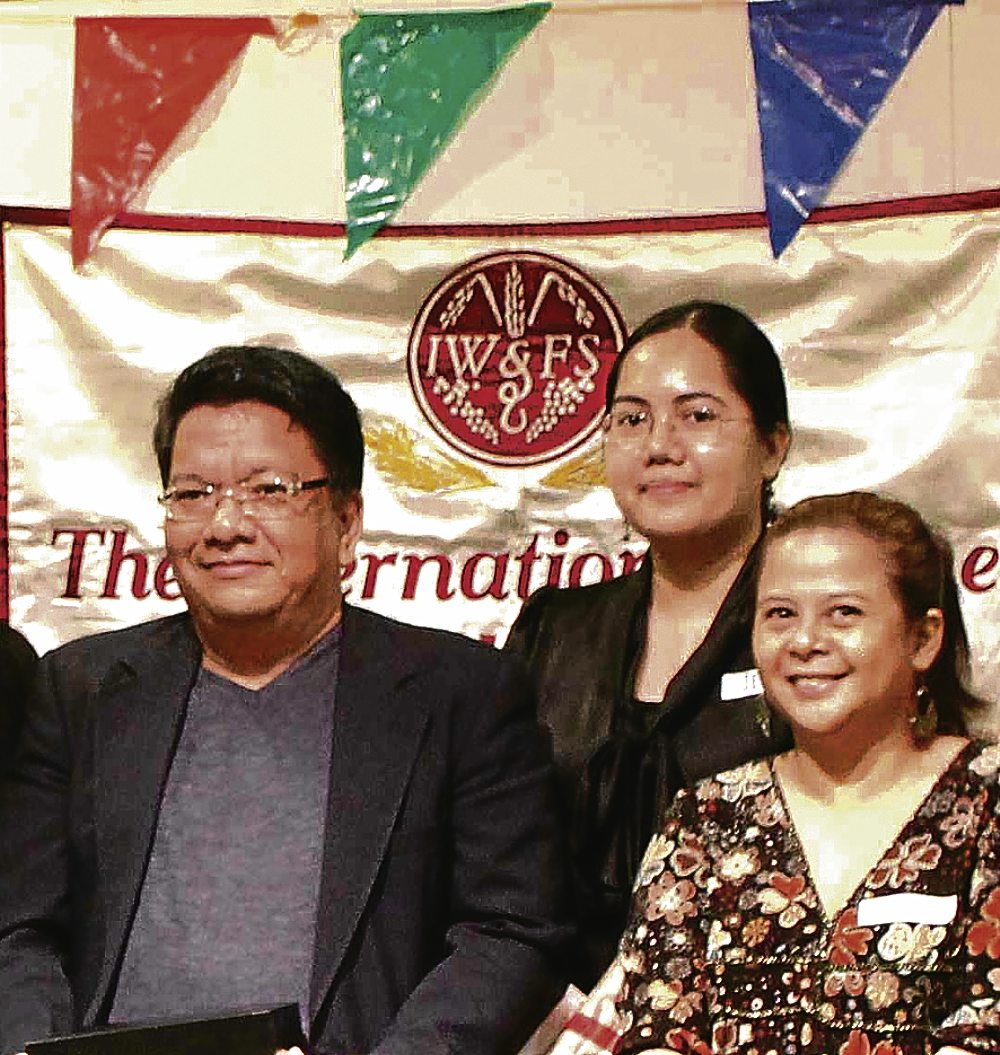 The top winner of the Doreen Gamboa Fernandez (DGF) Food Writing Award 2010 wrote about “wet pancit,” his childhood code name for the soup dishes with noodles that he preferred. Caesar Horatius Mosquera’s wet pancit were almondigas, misua with sardines, chicken sotanghon and batchoy, all of which he considers “small comforts that continue to remind me of love, of family and of home.”
The top winner of the Doreen Gamboa Fernandez (DGF) Food Writing Award 2010 wrote about “wet pancit,” his childhood code name for the soup dishes with noodles that he preferred. Caesar Horatius Mosquera’s wet pancit were almondigas, misua with sardines, chicken sotanghon and batchoy, all of which he considers “small comforts that continue to remind me of love, of family and of home.”
Mosquera is no stranger to the competition. We know him as the “Harry” who was twice a finalist of the Food Writing Award. He is presently group marketing services director of Active Group Inc. He loves to write about food and to cook, a good combination.
Second place went to another veteran of the competition, Jenny Orillos. She wrote about pancit puti, so-called because “of its color, or more precisely, the lack of it.” It is the pancit she tasted at a music shop in Quiapo on Platerias Street served during the fiesta and which she now cooks for celebrations. Orillos won second place as well in the 2008 competition on merienda food where she wrote about budin. She is a freelance writer contributing to magazines and has a column in the site Spot.ph.
Cassava flour
A pancit called “bato” won for Ofelia Niña Reyes Abay third place. The noodle dish takes its name from the town of Bato in Camarines Sur. It is a neighboring town of Iriga City where she hails from. It is made from cassava flour, which her mom flavors with three sauces—patis, suka and toyo. Abay is a visual artist and freelance events planner and public relations writer. She is a lecturer at the St. Clement’s Formation Center, a Redemptorist Seminary.
Fourth place went to Ferdinand Cortes who wrote about “The Mystery of the Late Night Pancit of Golden Star.” Golden Star is one and his favorite of the three Chinese panciteria at the intersection of Blumentritt and Avenida Rizal in Manila where his family lived. The pancit, when bought late at night, he considers better than the early morning pancit, and he found out the secret from an insider: “‘pag dalisay na ang caldo” or when the flavors have been rendered into the stock, that’s when it becomes for Cortes “the best tasting miki-bihon guisado of my youth!” Cortes presently writes abstracts of articles published in outsourced library work.
Ninth year
The winners were feted at a dinner of the International Wine and Food Society Manila Ladies Branch. The branch has made the Doreen Gamboa Fernandez Food Writing Award as its  project and this is the ninth year of the competition. It is named after its late founding member and first vice president. It was Fernandez who set the ground rules for the competition but she died just before it was launched.
project and this is the ninth year of the competition. It is named after its late founding member and first vice president. It was Fernandez who set the ground rules for the competition but she died just before it was launched.
On its 10th year in 2012, the DGF Food Writing Award will be held earlier than usual, to be launched in March so that the winners can be determined by June and be included in the book about the winning essays. The subject matter is panghimagas or Filipino desserts, a fitting ending section for the book.
The competition, however, is intended to continue in its mission “to create a significant body of Philippine literature about culinary culture.”
Winners received cash prizes from the Manila Ladies Branch and books from Anvil Publishing. The top winner also received a Mont Blanc Oyster pen donated by a Filipino manager of the company who is based abroad.
Other sponsors are New World Hotel, Fridays Boracay, Dusit Thani Hotel, Mandarin Oriental Manila, Makati Shangri-La, The Peninsula Manila, Edsa Shangri-La and Le Spa of Sofitel Luxury Hotel.
E-mail: [email protected].









































